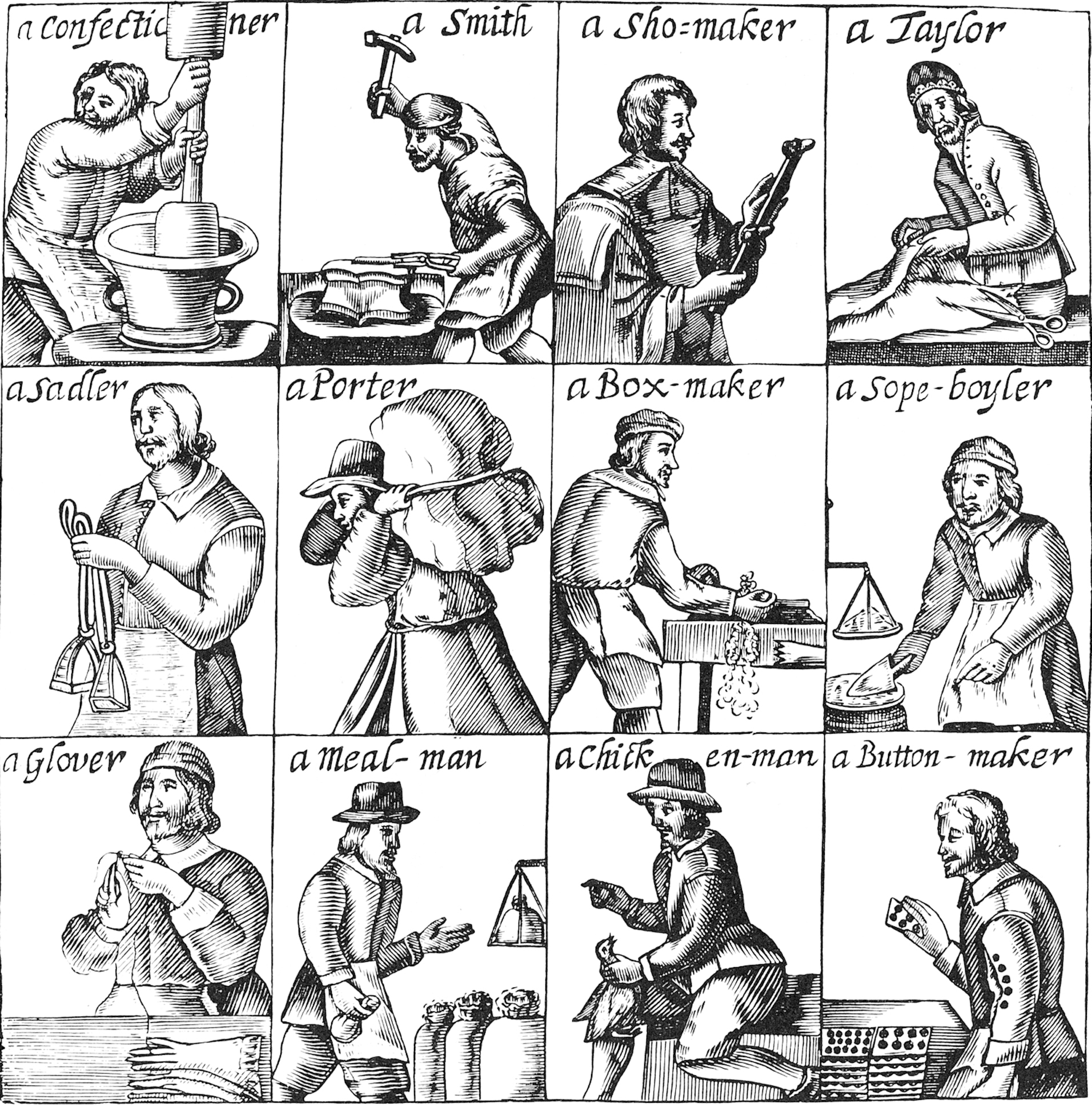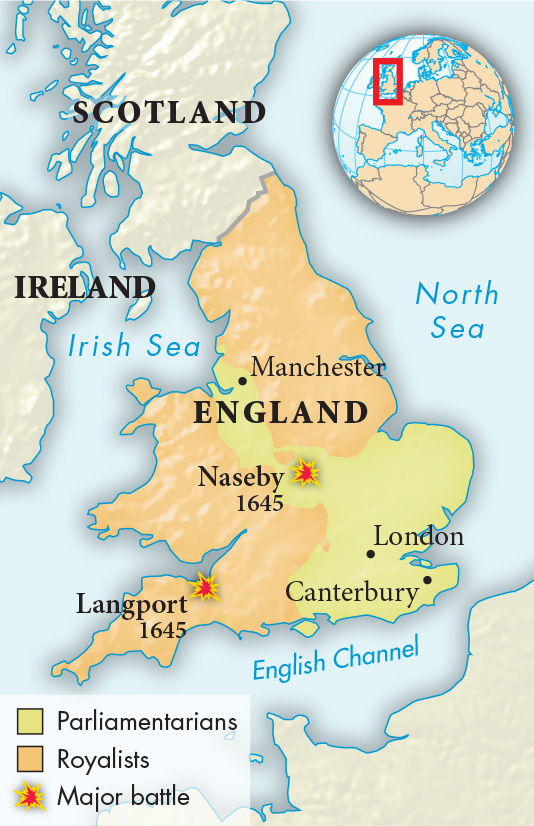Religious Divides and Civil War
In 1603 beloved Queen Elizabeth was succeeded by her Scottish cousin James Stuart, who ruled England as James I (r. 1603–
Religious issues also embittered relations between the king and the House of Commons. In the early seventeenth century many English people felt dissatisfied with the Church of England established by Henry VIII. Calvinist Puritans wanted to take the Reformation further by “purifying” the Anglican Church of Roman Catholic elements — elaborate vestments and ceremonials, bishops, and even the giving and wearing of wedding rings. James I responded to such ideas by declaring, “No bishop, no king.” For James, bishops were among the chief supporters of the throne. His son and successor, Charles I, further antagonized subjects by marrying a French Catholic princess and supporting the high-


Charles avoided direct confrontation by refusing to call Parliament into session from 1629 to 1640, financing his government through extraordinary stopgap levies considered illegal by most English people. However, when Scottish Calvinists revolted in anger against his religious policies, Charles was forced to summon Parliament to obtain funding for an army to put down the revolt. Angry with the king’s behavior and sympathetic with the Scots’ religious beliefs, the House of Commons passed the Triennial Act in 1641, which compelled the king to call Parliament every three years. The Commons also impeached Archbishop Laud and then threatened to abolish bishops. King Charles, fearful of a Scottish invasion — the original reason for summoning Parliament — reluctantly accepted these measures. The next act in the conflict was precipitated by the outbreak of rebellion in Ireland, where English governors and landlords had long exploited the people. In 1641 the Catholic gentry of Ireland led an uprising in response to a feared invasion by British anti-
Without an army, Charles I could neither come to terms with the Scots nor respond to the Irish rebellion. After a failed attempt to arrest parliamentary leaders, Charles left London for the north of England, where he began to raise an army. In response, Parliament formed its own army, the New Model Army. During the spring of 1642 both sides prepared for war.
The English Civil War (1642–